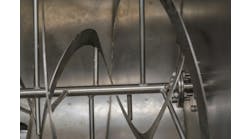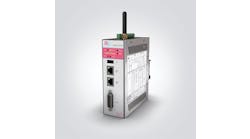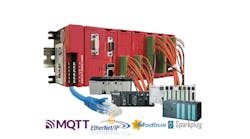Edge computing is all the rage, and in fact there are a lot of marketing campaigns that are pushing edge computing as a technology.
It really is only devices that are at the end of the line. And any device can be defined as an edge-computing device. Which makes small PLCs very much edge devices.
I have been working with Rockwell Automation’s Micro 800 line for the past number of months and have gained very valuable insight into the platform, as well as the applications that I have used them for.
I first had the honor of writing a product review of the Micro 800 line before the Ethernet/network version was released. I was far from impressed since it was very difficult to get communication working, and the free programming software was far from mature. It was very buggy, as well. Originally released in 2011, Rockwell has continued to add functionality and maturity to the product line.
Fast forward to five years, and what a difference a few years make.
I was the managing director of PLCopen, the association that supported the IEC-61131 standard in North America, so I was very familiar with the concepts behind the free CCW (Connected Components Workbench). When I first got my hands on the demo, the Rockwell representative suggested that I might have a hard time with the software and concepts because it is fairly new.
Well, I had to chuckle since IEC-61131 had been present in our world for more than 20 years at that point. The real problem was that the standard did not have any traction in North America at the time. That has changed over time, and right now most PLC platforms use tag-based, data-typing platforms that are IEC-compliant.
Remember however that the IEC model allows for alteration and additions, which make code transfer between vendors almost impossible. I have always asserted that there will be no vendor that will willingly allow its code to be used in a competitor’s hardware.
The CCW is not RSLogix 5000, which is Rockwell’s granddaddy of programming software. It still is a bit buggy, and the patches that are supposed to work to give the user better tools have never worked for me, and I tried it on two separate installations.
Also be aware that certain Microsoft updates can break CCW but to Rockwell’s defense they are transparent about it, and Microsoft actually changed the update to fix the problem that I personally experienced. Thankfully I might add because I was in the middle of a startup using the Micro820, and it was only Rockwell’s transparency that allowed me to uninstall the update in order to complete the project.
The Micro 800 line has grown through hardware to include the Micro850. In talking to people in the industry there doesn’t seem to be a lot of love for the platform. Software drives hardware in this millennium, so it would behoove Rockwell to develop more features for the CCW, like RSLogix 5000.
Did you know that if you wanted the data point to retain its value after a power cycle you have to explicitly tell the processor to do that? Retention is not assumed even with things such as counter values.
So when people start talking about the Micro850, which can control more than 100 I/O points the look of fear is evident on their faces. The development process using CCW is slow, and sometimes painfully slow.
When I ran into trouble I was introduced to the support team in Poland. The peeps there were very patient and very helpful. But I found it really interesting that a product line had its own support team.
The HMI offering is a PanelView 800, which is similar to other PanelViews, not to be confused with PanelView Plus. For our application we were able to create the screens necessary for the operators of the township that were going to use the systems.
In the applications we are communicating over the Internet to an SLC-505, as well as CompactLogix processors. The Micro820 is writing to the SLC, while the CompactLogix is reading from the Micro820, and the communications has been solid.
The user can VNC into the PanelView to control the systems, which saves callouts and thus money for the township. It has been used to extract runtimes for pumps so the operators don’t have to go into the field.
The Micro line of PLCs are edge devices and can be used successfully for most small applications, as well as machine control. The learning curve is certainly there since it is different, but once the curve has flattened you may be surprised on how easy it is to use once the hurdles have been understood.






